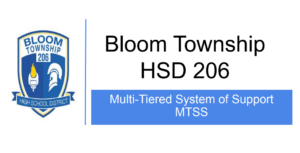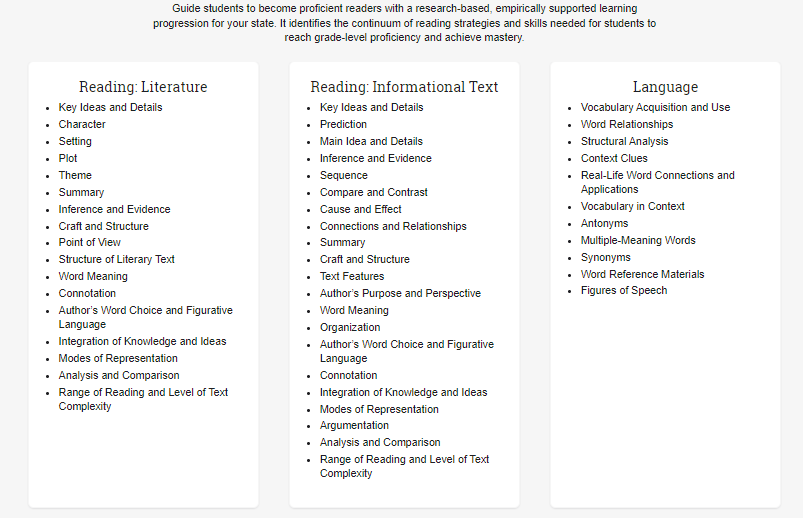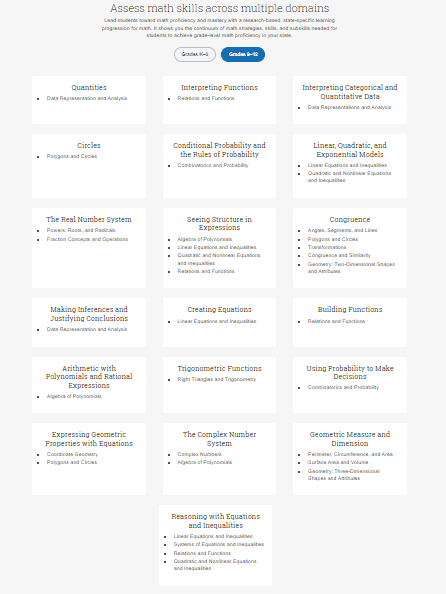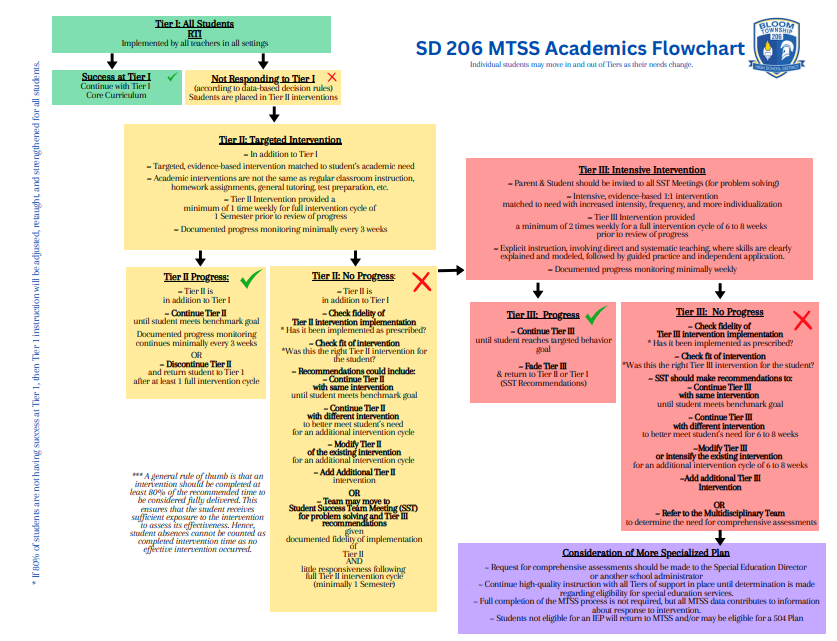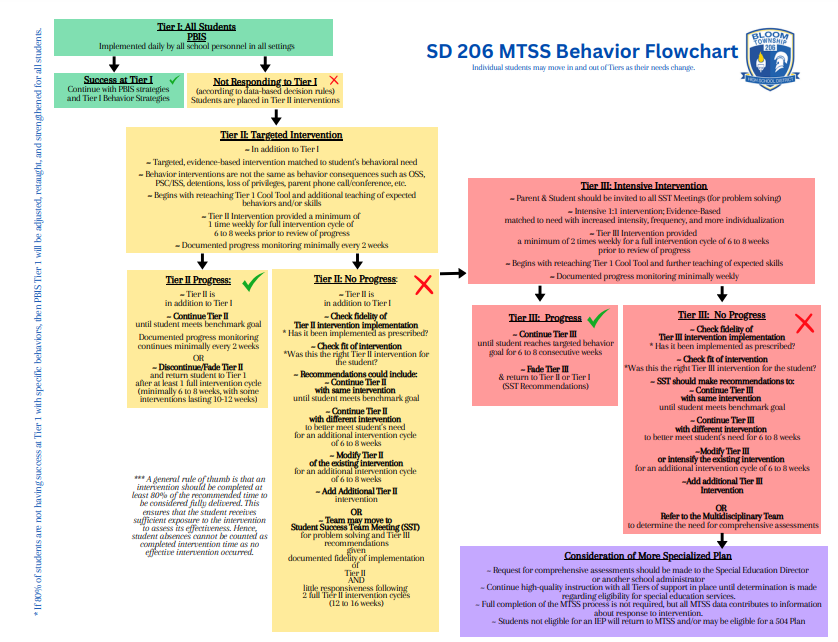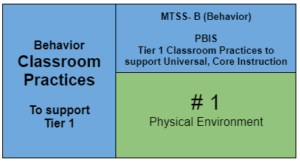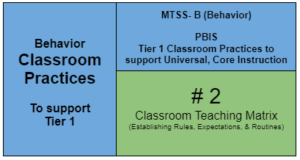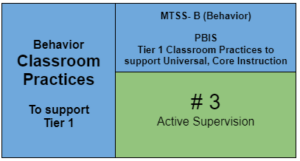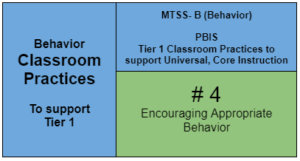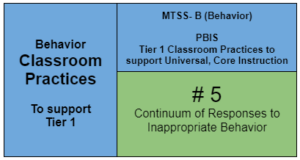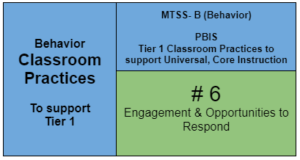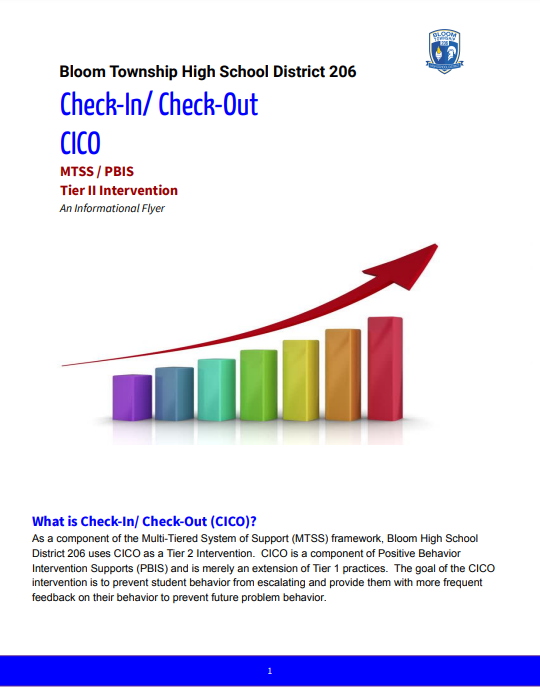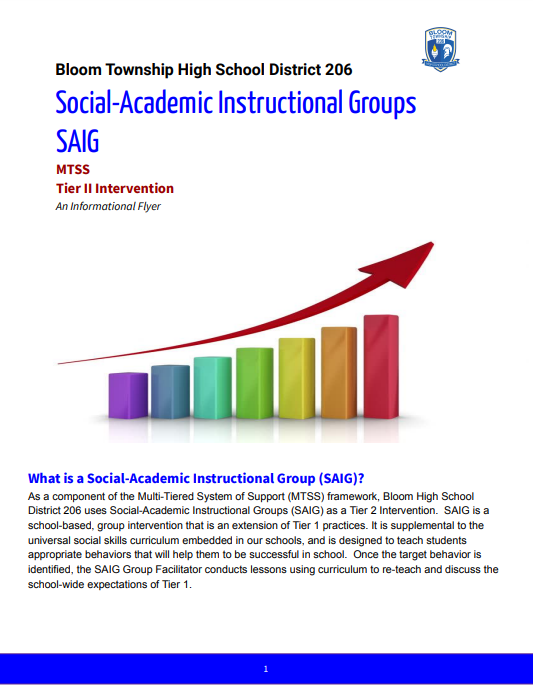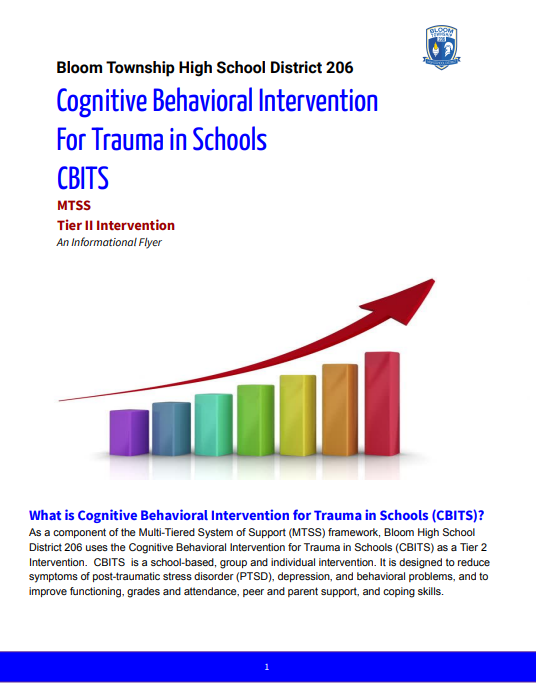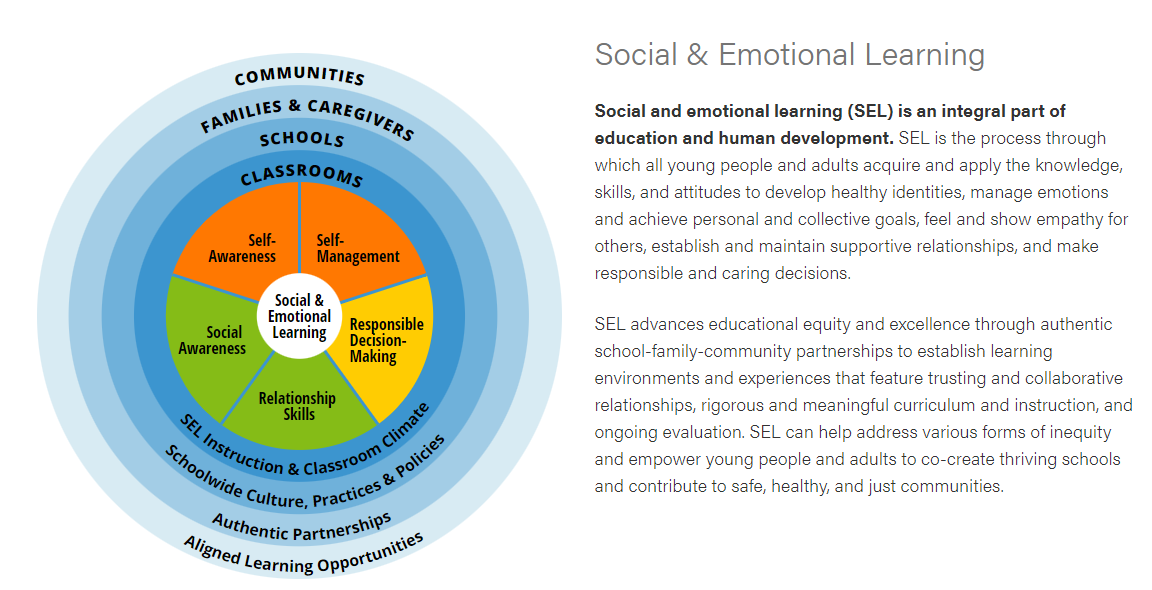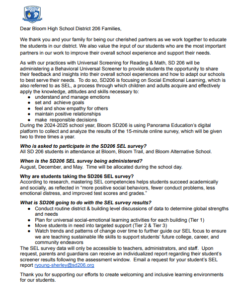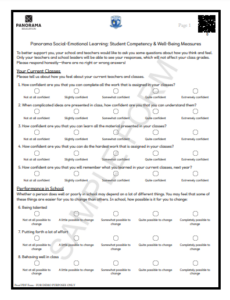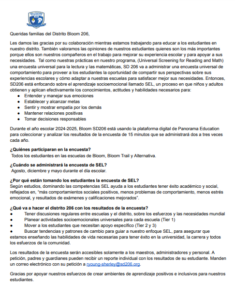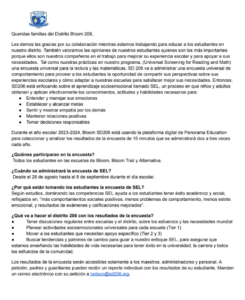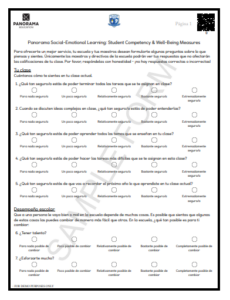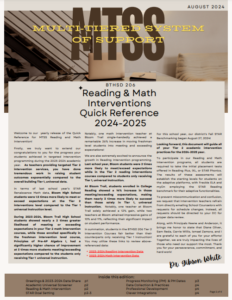- About the Superintendent
- Accessibility Considerations
- Bloom 206 Annual Report
- Board of Education
- Business Office
- Curriculum and Instruction
- Curriculum Blueprint
- Food Service
- Human Resources
- Mandatory Documents and Notifications
- Mission and Administration
- Multi-Tiered System Of Supports (MTSS)
- Policies
- Quicklinks
- Student Services
- Technology
- Title IX Administrator Academy
- SOPPA
WHAT IS MTSS?
With MTSS, all students participate in the core curriculum, while students with greater needs receive one or two additional tiers of intervention to provide additional support beyond the core curriculum. MTSS is a comprehensive tiered model of support to address the full range of students’ academic and behavioral needs. Academics is framed through Response to Intervention (RTI) and Behavior is framed through Positive Behavior Intervention & Supports (PBIS). Through progress monitoring and a problem solving approach, academic and behavioral performance data are guided for student success.
The MTSS Framework consists of 3 Tiers
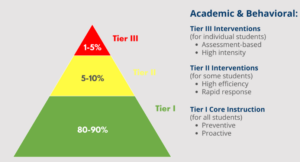
Academics– RTI Behavior– PBIS
TIERS OF MTSS
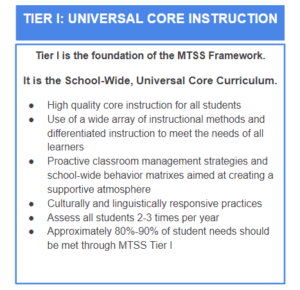
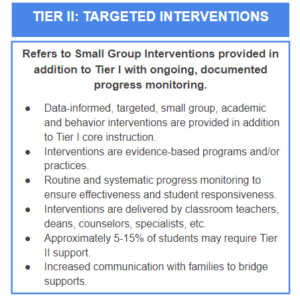
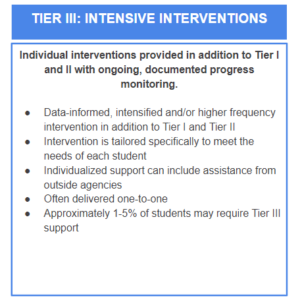
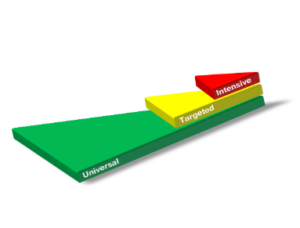
At Bloom Township HSD 206, ALL students will have equitable access with all staff participating as members of the multi-tiered system of supports. With MTSS, all students will have access to culturally- and linguistically-relevant practices that are layered in order to support the academic and behavioral needs of every student. As you can see in the image to the left:
- the green “Universal” layer, also referred to as Tier 1 , remains in place for ALL students.
- the yellow “Targeted” layer, also referred to as Tier 2 , is allocated for the needs of some students.
- the red “Intensive” layer, also referred to as Tier 3, is for the needs of a few students.
WHAT ARE THE ESSENTIAL COMPONENTS OF MTSS?
The MTSS process begins with high-quality instruction and universal screening of all students in the general education classroom. In addition to the universal Tier 1 instruction, MTSS will provide additional tiers of support, via interventions, at increasing levels of intensity to accelerate student learning and assist students with successfully reaching future outcomes.
Bloom HSD 206’s MTSS process will include the following essential components delivered along a continuum to meet the full spectrum of social, emotional, behavioral, and academic needs of students.
- A Proactive and Preventative Focus on Student Success
- Universal Screenings (which identify students who may be at-risk academically and/or behaviorally)
- High Quality & Explicit Instruction
- Use of Decision-Making Rules
- Evidence-Based, Systematic, Interventions
- Routine Progress Monitoring & Data Analysis
- Data-Based Decision-Making to Adjust Instruction / Interventions
- Team-Based Problem Solving
- Parent and Community Voice and Involvement
Paramount to this process is family engagement. When schools inform parents and families
frequently of their student’s progress, families become more active and meaningful participants in the
school’s educational effort.
MTSS – Academics Overview
supported by the RTI Framework
Click images below to enlarge or print.
MTSS- A- Universal Screener- STAR Enterprise– Reading & Math are also assessed in Spanish
![]()
Based upon the results of the Universal Screeners in Reading and Math, the following infographics assist with our school district’s decision-making rules for academics.
2024-2025 MTSS Academic Intervention / Progress Monitoring Calendar
(click image to enlarge or print)
MTSS. Academics Flowchart. 2024-2025
(click image to enlarge or print)
MTSS. Behavior Flowchart. 2024-2025
(click image to enlarge or print)
MTSS- Behavior Tier 1 (Universal Support)
(often referred to as MTSS-B)
supported by the PBIS Framework
The Behavior side of MTSS is also referred to as MTSS-B. At SD 206, we utilize the PBIS framework to support student behavior needs under MTSS-B. This framework is a comprehensive system of social, emotional, and behavior supports to promote student wellness and improve engagement in learning. According to the U.S. Department of Education, Institute of Education Sciences, the MTSS-B approach seeks to change the school learning environment by consistently teaching and reinforcing good behavior for all students.
Classroom Practices for All Teachers and All Students, Universal for ALL
In an effort to instill core, universal practices at Tier 1 for all students in all classrooms, the SD 206 Teachers have been trained on the following PBIS Classroom Practices to support behavior in any content area. These are not considered interventions. These classroom practices are utilized to support all students.
Click one of the images below for more detailed information on each Tier 1 strategy.
MTSS- Behavior Tier 2 (Targeted Interventions)
As stated, the Behavior side of MTSS is also referred to as MTSS-B. At SD 206, we utilize the PBIS framework to support student behavior needs under MTSS-B. According to the U.S. Department of Education, Institute of Education Sciences, schools should identify and provide supplemental support to students who need it. At Tier 2, interventions are provided for groups of students based upon targeted needs as indicated via the district’s decision-making rules. In theory, approximately 15% of our student population will be in need of Tier 2 supports. All students who are receiving Tier 2 supports must be provided a minimum of two Tier 2 interventions along with systemic progress monitoring and review of their data. Upon determination of responsiveness to Tier 2 interventions, team members make decisions on whether students can:
- Return to Tier 1
- Remain in Tier 2 support with a recommendation for modifications to the initial Tier 2 intervention
- Remain in Tier 2 for a different Tier 2 intervention
- Move to Tier 3
Regardless, when a student is in Tier 2 intervention, students continue to receive all of Tier 1 strategies. We never remove the earlier Tier of support. Below is the SD206 MTSS/ PBIS flow chart of the Behavior 3-Tiered System of Support.
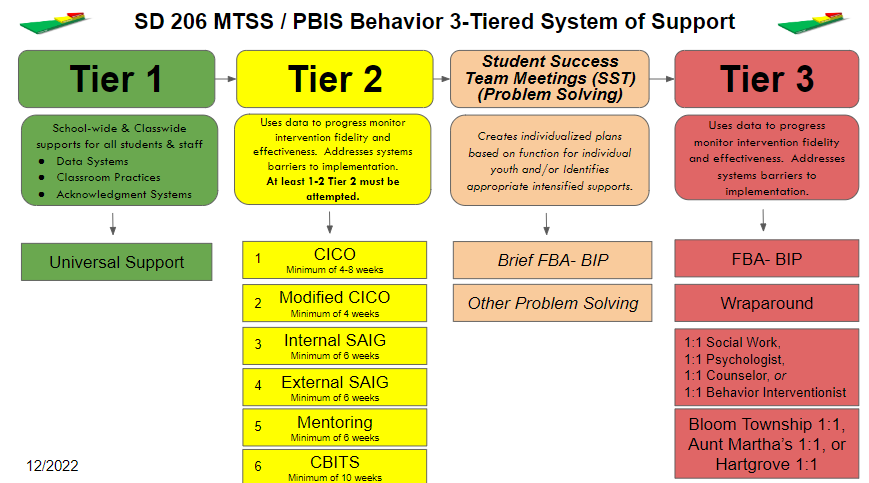
MTSS-B Tier 2 Intervention: Check-In / Check-Out (CICO)
Click image to enlarge or print this informational flyer.
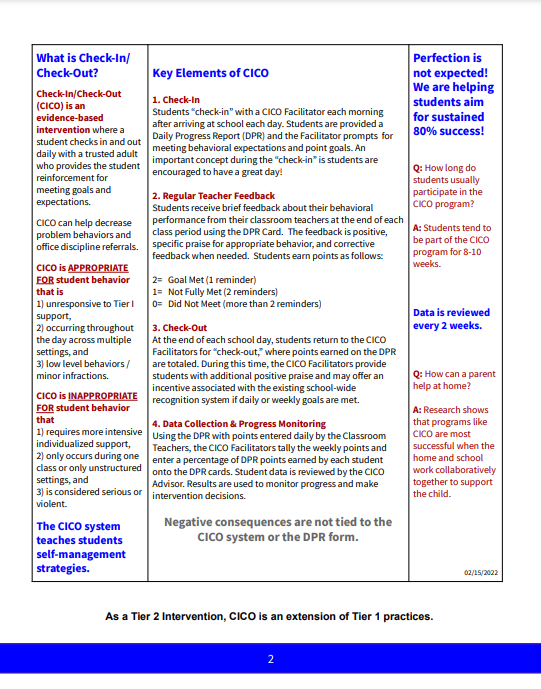
MTSS-B Tier 2 Intervention: SAIG (Social Academic Instructional Groups)
Click image to enlarge or print this informational flyer.
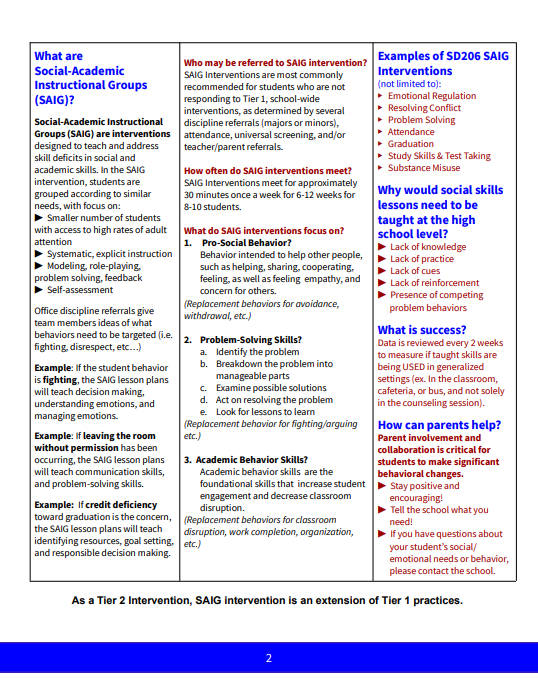
MTSS- B Tier 2 Intervention: CBITS (Cognitive Behavioral Intervention for Trauma in Schools)
Click image to enlarge or print this informational flyer.
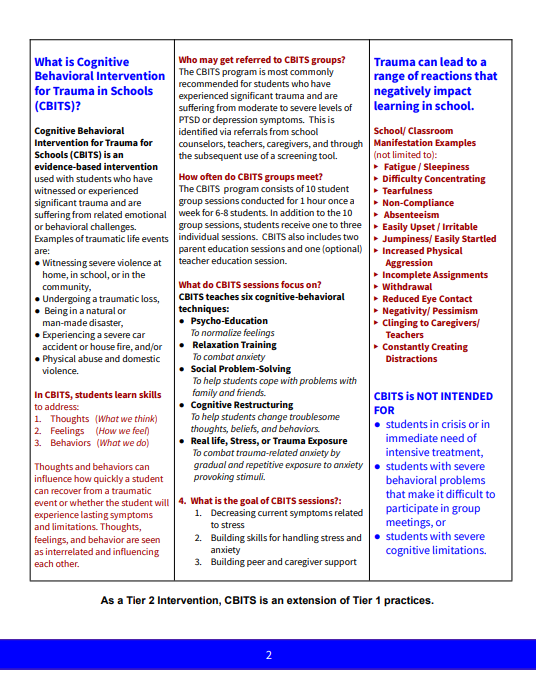
MTSS- Behavior also supports SEL
Click images below to enlarge or print these CASEL and/or Panorama SEL Survey-related items.
The SD206 MTSS framework also addresses students SEL needs, which refers to Social Emotional Learning. SD 206 utilizes the Panorama SEL Survey, which is administered as a Behavior Universal Screener. The Panorama SEL Survey is aligned to the CASEL SEL Competencies. CASEL stands for Collaborative for Academic, Social, & Emotional Learning).
SEL Survey Notice to Students
SEL Survey Notice to Students– Español
MTSS Newsletters and MTSS Quick-Reference Guides as a Reference to SD 206 MTSS Practices.
Click images to enlarge or print this these resources
Other Resources as a Reference to SD 206 MTSS Practices. MTSS. Reading & Math Interventions Quick Reference. 2024-2025
For questions regarding the district’s MTSS Framework, please contact Dr. Tasha Gibson White at [email protected].

How Can Parents Help With MTSS?
- Get your student to school on time, ready to learn –every day!
- Communicate with your student’s teacher
- Monitor student grades via PowerSchool
- Review your student’s progress monitoring data
- Share your student’s successes
- Help your student set personal goals
- Help your student understand how to persevere through the tough parts of school
- Learn more about the curricula and interventions being used in your student’s school
- Attend parent/teacher conferences and other school meeting about your student
FAMILY & COMMUNITY ENGAGEMENT RESOURCES
Access some of the resources geared toward sustaining the SD 206 framework for building greater support between our school, families, and communities.
Reading
9th Grade Reading Books for Teens Aged 14-15
10th Grade Reading Books for Teens Aged 15-16
11th Grade Reading Books for Teens Aged 16-17
12th Grade Reading Books for Teens for Teens Aged 17-18
Math
77 Free math Resources & Online Tools for Students & Teachers
Behavior and Social Emotional Wellness
***Safe To Help Illinois Resources***
Anxiety
Bullying Tips
Coping Skills
Depression
Healthy Relationships
Self-Esteem
Stress
Teenage Stress
Worried About a Friend
PBIS: Aligning and Integrating Family Engagement in PBIS: Concepts and Strategies for Families & Schools in Key Contexts
